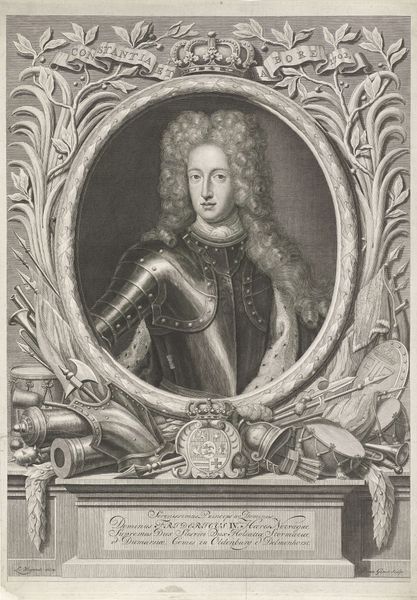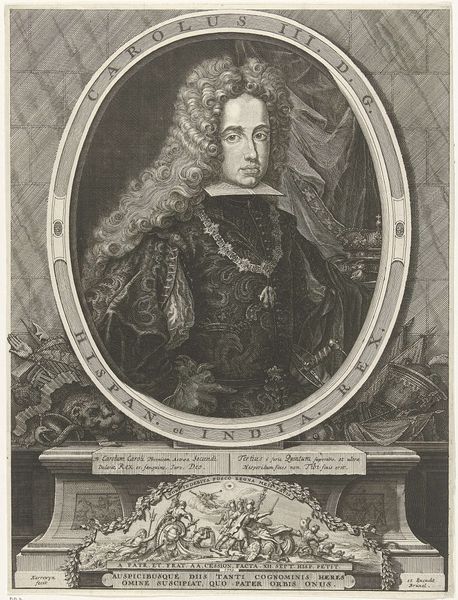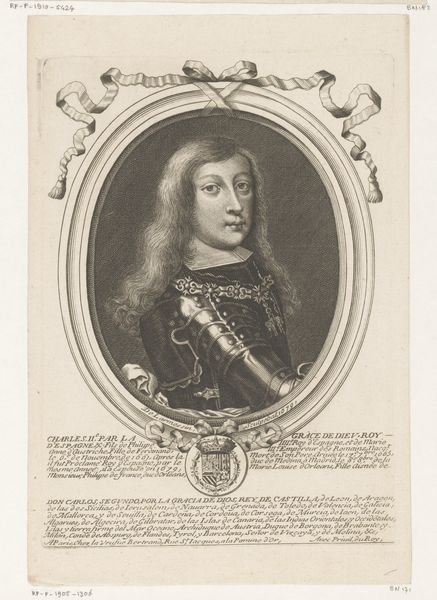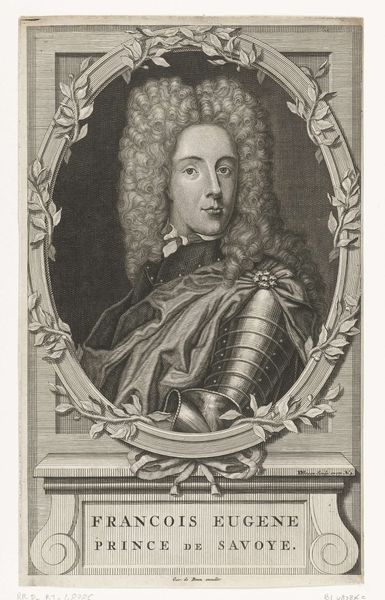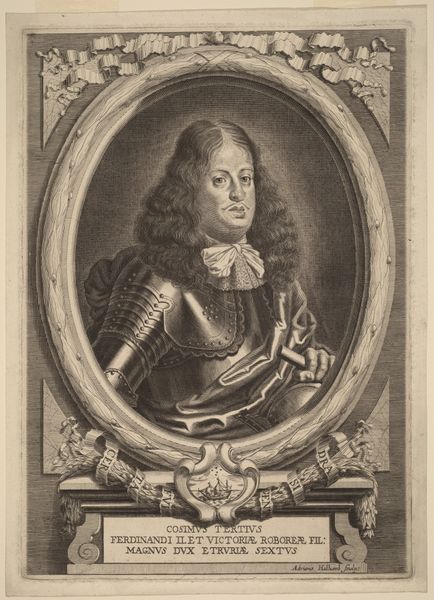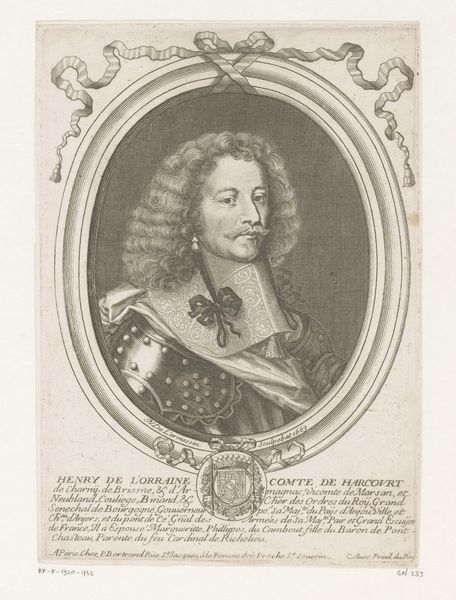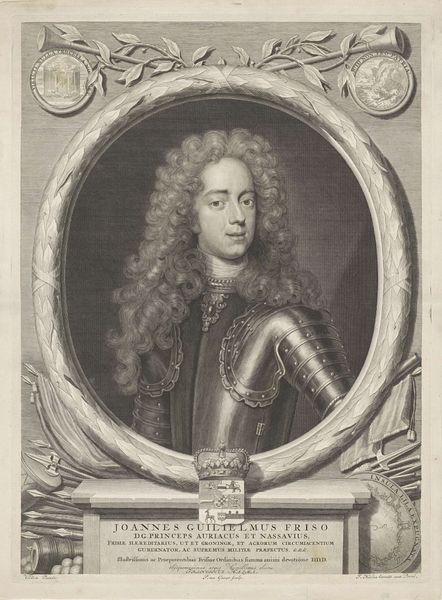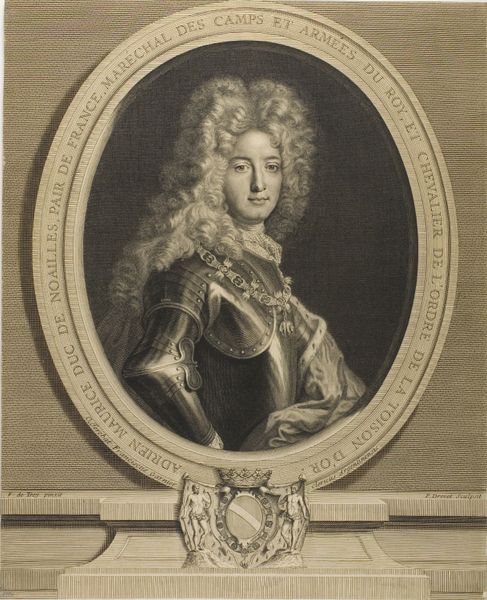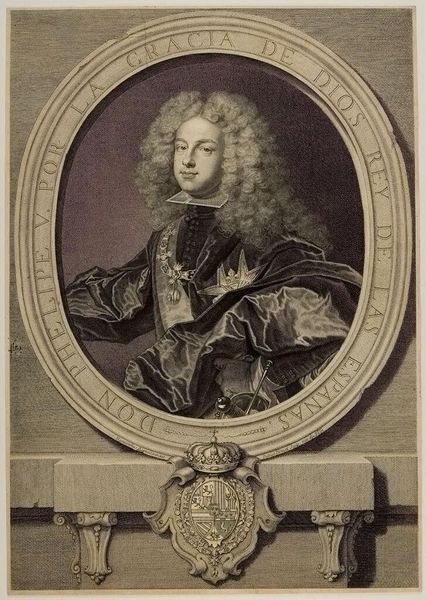
engraving
#
portrait
#
baroque
#
historical fashion
#
line
#
history-painting
#
engraving
Dimensions: height 501 mm, width 391 mm
Copyright: Rijks Museum: Open Domain
Curator: This is a portrait of Emperor Charles VI, engraved by Pieter van Gunst. Its date is estimated between 1695 and 1731, a period aligning with the late Baroque era. Editor: My first impression is the weight of adornment, formal expectations pressing down—an overwhelming density of line suggesting layers of authority and representation. It's meticulously rendered. Curator: The engraving showcases remarkable linear precision. Note the controlled yet decorative use of line to describe everything from the ornate frame with the musical horns and the crown resting on what appears to be some drapery to the texture of his wig. The details are incredible, especially in the chain and fabrics. Editor: It speaks volumes about dynastic power, but who did it really serve? We see Charles as the divine ruler through strategic use of iconography. His garments, and symbols underscore authority at the cost of any personal representation or sense of identity beyond royal duties. What narratives were excluded to maintain this idealized version? Curator: The linear quality does contribute to a certain distancing effect, lending it the appearance of formality, perhaps also contributing to that sense of imposing authority. In the engraving's form we find that classical pursuit of idealization; Charles VI's authority seems meticulously constructed in this print's precise, deliberate artistry. Editor: Consider this through a contemporary lens: Who were the engraver’s patrons, and whose interests were furthered? The composition and visual language served colonial ambition, while back home common folks were grappling with issues unseen or disregarded in artwork commissioned by and of the elite. It perpetuates inequality through its celebration of power. Curator: Well, regardless, I would argue the visual rhetoric of power deployed here also reveals much about period aesthetics. Gunst uses the stylistic vocabulary available to visually convey power in that period, offering a historical record of style alongside its propagandistic intentions. Editor: Perhaps. But let's not forget how portraiture like this became instrumental in justifying unequal structures and social disparities that, although presented within aesthetic rules and considerations, extend far beyond considerations of mere historical visual styles.
Comments
No comments
Be the first to comment and join the conversation on the ultimate creative platform.

